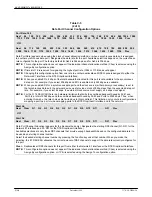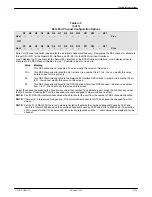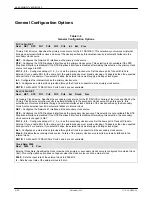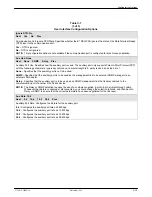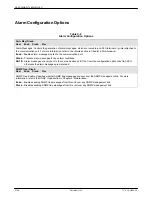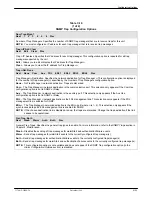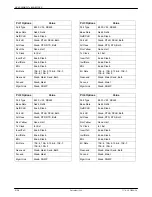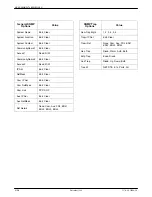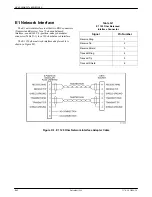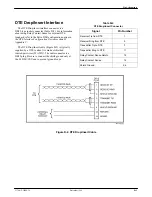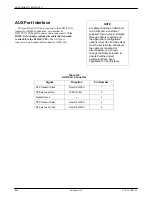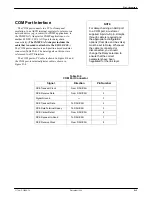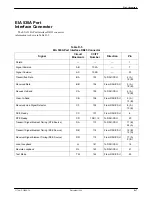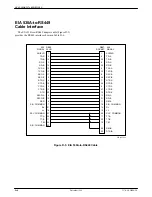
Configuration Options
C-21
3170-A2-GB20-20
December 1996
Table C-10
(1 of 2)
SNMP Trap Configuration Options
Num Trap Mgrs: 1
Next 1 2 3 4 5 6 Prev
Number of Trap Managers. Specifies the number of SNMP trap managers that are to receive traps for this unit.
NOTE: You must configure an IP address for each trap manager that is to receive trap messages.
Trap
n IP Adr: Clear
Next Edit Clear Prev
Trap
n IP Address. Specifies the IP address for each trap manager. This configuration option is repeated for all trap
managers supported by the unit.
Edit – Allows you to edit or display the IP address for Trap Manager
n.
Clear – Allows you to clear the IP address for Trap Manager
n.
Trap
n Dst: None
Next None Com Aux FDL EDL1 EDL2 EDL3 EDL4 Prev
Trap Manager
n Destination. Specifies the network destination for Trap Manager n. This configuration option is displayed
for the number of trap managers (
n) specified by the Number of Trap Managers configuration option.
None – No Trap Manage
n network destination. Traps are discarded.
Com – The Trap Manager
n network destination is the communication port. This selection only appears if the Com Use
configuration option is set to SNMP or Daisy.
Aux – The Trap Manager
n network destination is the auxiliary port. This selection only appears if the Aux Use
configuration option is set to SNMP or Daisy.
FDL – The Trap Manager
n network destination is the FDL management link. This selection only appears if the FDL
management link is enabled for SNMP.
EDL
n – The Trap Manager n network destination is the EDLn port (where n is 1– 4). This selection only appears if the
synchronous data port’s EDL management link is enabled for SNMP.
NOTE: If the chosen destination link is disabled or down, the traps are discarded. Change the trap destination if the link
ceases to be operational.
Gen Trap: Both
Next Disab Warm Auth Both Prev
General Trap Types. Specifies the general trap types to enable. For more information, refer to the
SNMP Traps section in
Chapter 4,
Maintenance.
Disab – Disables the sending of trap messages for warmStart and authenticationFailure events.
Warm – Sends trap messages for warmStart events to the currently configured trap manager(s).
Auth – Sends trap messages for authenticationFailure events to the currently configured trap manager(s).
Both – Sends trap messages for warmStart and authenticationFailure events to the currently configured trap manager(s).
NOTE: This configuration option is not available and does not appear if the SNMP Trap configuration option (in the
Alarm Configuration Options section) is disabled.




